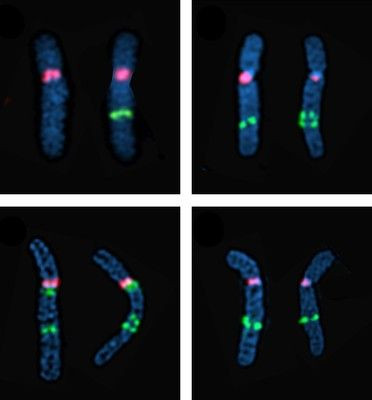Missing Enzymes Trigger Abnormal Levels of Fear In Mice

Scientists have found that two missing brain enzymes leads to abnormal levels of fear and anxiety in mice. The findings, which are published in the journal Proceedings of the National Academy of Sciences, could represent a significant step towards a better understanding of developmental disabilities along the autism spectrum.
The experiment examined mice without the enzymes monoamine oxidase A and B (MAO A/B) - two proteins that appear in sequence in the genetic code of both humans and mice. Previous research has found that in humans, such deficiencies are linked to autism-like disabilities. These disabilities include clinical perseveration, or the inability to modulate one's actions along with unfolding social contexts.
"These mice may serve as an interesting model to develop interventions to these neuropsychiatric disorders," said senior author Jean C. Shih, USC University Professor and Boyd & Elsie Welin Professor of Pharmacology and Pharmaceutical Sciences at the USC School of Pharmacy and the Keck School of Medicine of USC. "The severity of the changes in the MAO A/B knockout mice compared to MAO A knockout mice supports the idea that the severity of autistic-like features may be correlated to the amounts of monoamine levels, particularly at early developmental stages."
In the experiment, the mice were introduced to a new, neutral environment and given a mild electric shock. While all subjects exhibited learned fear upon reintroduction to the environment, the mice with the inactive brain enzymes displayed much higher degrees of anxiety when compared to the wild control group.
In addition, the knockout mice could not continue to explore new environments without showing similar levels of trepidation.
The researchers found that compared to the wild mice, the genetically modified subjects displayed an enhancement in their ability to assign danger to external stimuli, leading them to experience fear in contexts unrelated to the original danger element.
"The neural substrates processing fear in the brain is very different in these mice," said lead author Chanpreet Singh. "Enhanced learning in the wrong context is a disorder and is exemplified by these mice. Their brain is not letting them forget. In a survival issue, you need to be able to forget things."
The team noted that the differences in learning were limited to emotional events such as fear, and that the knockout mice did not exhibit any impairment when it came to spatial skills and object recognition.
"When both enzymes are missing, it significantly increases the levels of neurotransmitters, which causes developmental changes, which leads to differential expression of receptors that are very important for synaptic plasticity - a measure of learning - and to behavior that is quite similar to what we see along the autism spectrum," said Singh.
Source:
Chanpreet Singh, Marco Bortolato, Namrata Bali, Sean C. Godar, Anna L. Scott, Kevin Chen, Richard F. Thompson, and Jean C. Shih. "Cognitive abnormalities and hippocampal alterations in monoamine oxidase A and B knockout mice."
PNAS 2013.
Published by Medicaldaily.com



























